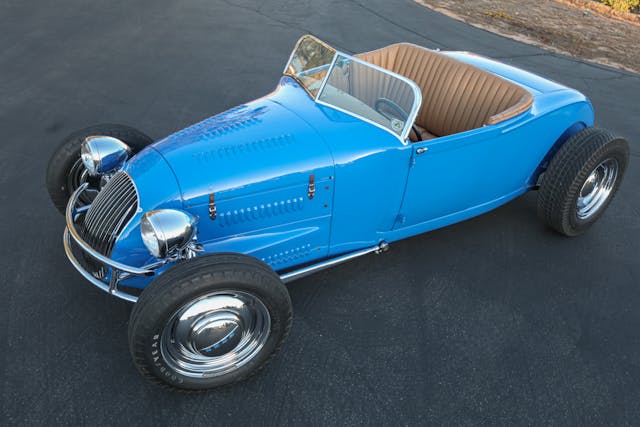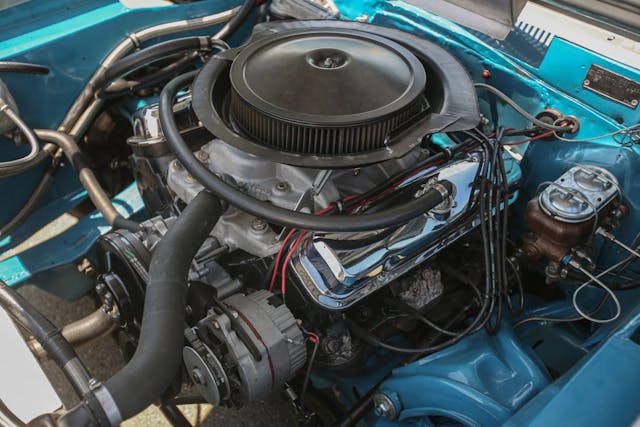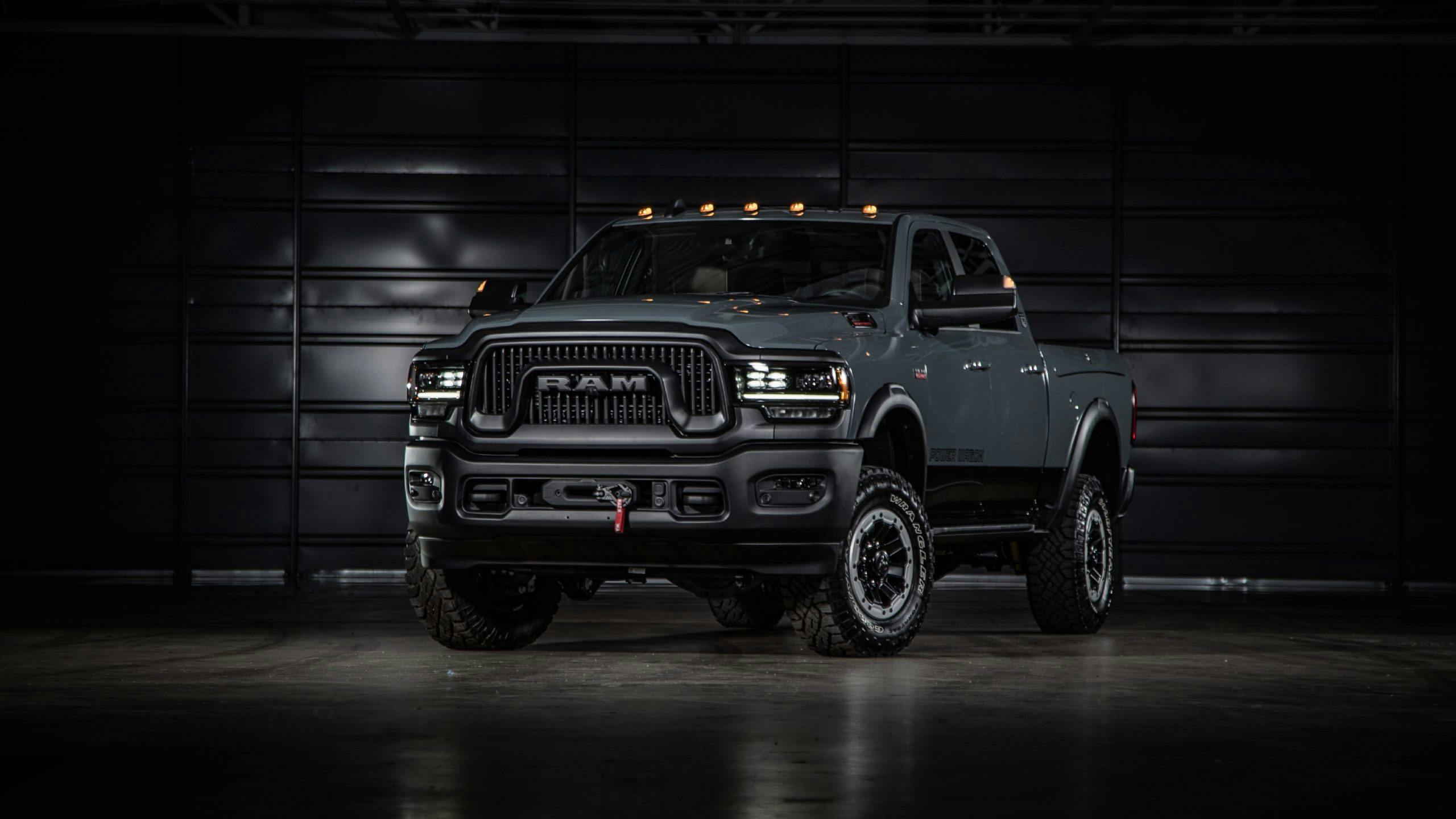4 car terms misused by almost everyone
Automotive enthusiasm has its own glossary. Many of the terms mean something different from one niche of the culture to another, but some have well-established definitions. Below are four of my biggest pet peeves in car nomenclature.
Some argue that because language is always changing, every word acquires a new meaning over time. That’s true, but only if we let them—and why fix what isn’t broken?

1. “Roadster”
The slow evolution of the term roadster is one that I’ll have to accept, but there’s a bar for entry—a point at which a car is simply not a roadster.
A century ago, “roadster” meant a two-seat, topless car with minimal weather protection. A Ford Model A roadster doesn’t have glass side windows, while a Model A cabriolet does. By the 1950s, the word’s meaning had been nudged a little—European sports cars with fabric side curtains and tops were still called roadsters, because their weather gear didn’t do much.
Later, the term evolved into a way to differentiate between sporty, two-seat convertibles and larger, more luxurious four-seat convertibles. That makes for a blurry line, of course. The Porsche 718 Boxster is a roadster, a 5000-pound, four-seat Bentley Continental GTC is not, and there’s plenty of room between the two for debate.
The upcoming Tesla Roadster, with its four seats and its fixed rear roof, is not a roadster by any definition, past or present. What’s so bad about admitting that a car is a targa-top?

2. “Big-block” Pontiac
Spend enough time searching classified ads, you’ll inevitably come across a car powered by a “Pontiac big-block.” There is no Pontiac big-block.
Pontiac unveiled its first V-8 in 1955. For nearly 30 years, until the division replaced its house V-8 with a version of GM’s “corporate” Chevy small-block, there was only one Pontiac V-8 architecture. From 265 cubic inches all the way to 455, Pontiac used just one bore spacing (the distance from the center of one cylinder bore to the center of the adjacent bore in the same bank). The 5.0-liter used in early Trans-Am racing (above) has the same external dimensions as a 455.
(Before anyone mentions it, Big Chief cylinder heads bolted onto a Chevy big-block bottom end don’t make the engine a Pontiac big-block.)
Oldsmobile is the same way, with identical bore spacing in everything from the 303 Rocket to the monster 455. Olds fans like to differentiate between small- and big-block engines based on deck height—the distance from crankshaft center to cylinder top—but that’s not what makes a big-block in my book. Tall-deck Chevy LSX engines are still small-blocks, after all.
With Olds and Pontiac, it seems the confusion comes from the fans themselves—each brand is now dead, and neither used the “small-block” or “big-block” nomenclature in any official capacity.

3. “Heat Soak”
When the C7 Corvette Z06 debuted for 2015, road-racing netizens were quick to assault its supercharged, 650-hp LT4 V-8. They were certain that a naturally aspirated V-8 was the proper choice for a track-focused Corvette.
They had a point, at least for a bit. The initial version of the cooling system in that Z06 wasn’t up to the task of keeping intake air cool for prolonged track sessions at high ambient temperatures. The result was reduced performance. For 2017, Chevrolet remedied the problem with a new cooling system and a supercharger lid with an improved charge cooler. (The latter part also found its way onto later applications of that engine, including the sixth-gen Camaro ZL1.)
Plenty of outlets said those early Z06s were experiencing “heat soak.” They weren’t. The engines in those cars simply produced more heat than the cooling system could deal with. “Heat soak” is what happens when an engine’s cooling system rises in temperature after you shut it off. When the water pump is no longer pumping coolant through the radiator, because that pump only runs when the engine is running.
Park a hot car, fresh off the track, and turn off the engine—coolant temps will continue to climb. If an engine is still running and still pushing coolant through its radiator, but it can’t keep everything happy enough to produce the quoted factory power? We already have a term for that: overheating.

4. “Widebody”
I’ve saved my most pedantic pet peeve for last. Fender flares don’t make a car a widebody.
Blame Dodge for legitimizing this. The picture above is a “widebody” Challenger. The car is also offered in a standard “narrow” configuration, without the fender flares.
If the fenders and quarter panels on the “narrow” and “widebody” versions of a car are the same, something doesn’t add up. Let’s use a Mopar cousin as an example: You could call the Ram TRX (below, left) a widebody, sure. The body is substantially different from that of the base Ram. But the Power Wagon? I don’t think so.
Many of you probably disagree with these silly opinions. I’d love to hear your own car-language pet peeves—share them in the comments! (Just don’t expect to change my mind.)
***
Check out the Hagerty Media homepage so you don’t miss a single story, or better yet, bookmark it. To get our best stories delivered right to your inbox, subscribe to our newsletters.





Detailing. The term probably isn’t incorrectly by this crowd, but a simple wash/wax/vacuum/smear some protectant on the tires job isn’t detailing. Also 6-cylinder engine configurations. Years ago a co-worker was bragging to me about how powerful the V-6 was in his BMW M3. I told him it didn’t have a V-6, it had an inline-6. He asked what the difference was and that the salesman told him it was a V-6.
Salesman…….ugh.. Few years ago we bought a MB GLC 300. Nice car. Anyway, when I asked about the engine, the sales guy, about as bright as a 5 watt bulb, mumbled something …And it is turbo-charged. I doubt he had any idea what that meant, so I I figured I’d keep the conversation going and asked if it was intercooled. He said something about the car having a great A/C and heater. It did not get any better.
“Widebody” goes back to 1959 and the “Wide Track” Pontiac! Strictly an advertising ploy that was very successful. We should have seen DeLorean’s handwriting on the dashboard!
Love 59 Pontiacs but not sure I agree with them as the source of widebody. There is no narrow-body variant.
‘73 Carrera 2.7 RS 911 is the first factory widebody my slight research can come up with. IMSA racing getting coverage in late 70s/early 80s Hot Rod magazines is where my personal definition of widebody was formed. Some of those had very prominent widebody elements.
The perimeter road around Pontiac Michigan retains that name (Wide Track Drive) to this day.
Thank God for the clarification on the mystical term ” Big Block Pontiac “. I think most people think Chevrolet motors using these terms and assume Pontiac motors are the same in reference to big block and small blocks. For clarification for those “Pontiac challenged” people the cubic inch displacement comes from the bore and stroke combinations associated with any particular size Pontiac motors along with crankshaft journal size, same as most other brand motors. The 301 in casting (not 305 Chevy motors) are a story in themselves.
Here’s an automotive (apparently–because I see now and then in the Hagerty Publications) term which I never have heard from any of my automotive friends or shops or other publications: ‘bespoke’ I went to the dictionary so that I could understand it. Here’s what I discovered: It is a British term which originally had to do with tailoring (men’s) suits. It has morphed to mean anything which is made to a requested size, shape, etc., design. I guess that here in the USA we would use “custom made”. I think that shall continue to speak in terms of “custom”, since that’s the terminology common to the USA.
When working for AMC, we referred to “Heat Soak” when we sent vehicles to Arizona for performance testing in the hot environment, which also strained the A/C and interiors after the entire vehicle reached a specified temperature throughout.
Havn’t sorted theu all of the comments but was surprised the Pontiac fans missed the CID of the first Pontiac V8. It was 256 not 265 as stated in the article. 265 was the 1955 Chevrolet V8.
This was a great article about pet peeves… Both amusing and educational to read
“How many mile do you have ‘on the clock’?” Clocks tell TIME, odometers record MILEAGE.
When did “Shooting Brakes” more then 2 doors?
Love it when people say it’s original , restored. It’s either one or the other.
Restored to original?……LOL
Not a generic car term, but pretty much everyone gets the make and model of the DeLorean car wrong. Everyone says “DeLorean” for make and “DMC-12” for the model. None of which is technically true. The name of the company, the manufacturer was “DMC”. The model of the car was just “DeLorean” believe it or not. The proper make/model is “DeLorean/DMC”. Yes, the internal factory project code was “DMC-12”, and for a while in pre-production, they were planning to use “DMC-12” as the model name but ended up having to change their minds prior to release (due to the MSRP coming in at more than twice the expected $12,000 early estimated MSRP). Of course the company didn’t go around giving a lot of press conferences about the change for obvious reasons. Who wants to get in front of a bunch of journalists and admit, “ya, by the way, we’re not going to call the car “DMC-12″ anymore because the MSRP is now going to be about $25,000 instead of the $12,000 we originally planned.” They simply changed the model name to DeLorean and brushed it under the rug. The press continued printing “DMC-12” through production and most everyone has used the term since, but FYI; it was released as simply the “DeLorean”. The make/model on the original MSO shows “DMC”-“DeLorean”, not “DeLorean”-“DMC-12”. The car itself doesn’t say “DMC-12” anywhere on it, no logos, no emblems, nothing from a marketing perspective showed “DMC-12”. The original brochures and other sales materials, same, no mention of “DMC-12” at all. The only emblems on the entire car simply give the company name or make, “DMC” and nothing more. Sure, many owners had “DMC-12” filled in on their original titles because that’s just a function of the person filling out the paperwork. A title is nothing official from the manufacturer’s point of view. If the person filling out the original application for title followed the MSO as they should have, then the title would properly read “DeLorean” as the model.
Olds engines definitely had big block and small block. A 330 or 350 was narrower across the intake than a 425 or 455.
Hmmm…. Dampen is something you do to a dry sponge if you want to use it. Damp is something you do to vibration or to limit movement. Shock absorbers are really dampers.
Big block Pontiacs? Never cared enough to go further than “3 duces and a 4 speed, and a 389…”
Roadster? Don’t really care about that, either. Has sport cars (small two seaters, some with roll up windows (Sunbeam Alpine and Tiger), some without (Sprite, Healey 3000, Morgan +8). Most of the open hot rods that my friends had were “roadsters”. Never thought about tit much.
Heat Soak? Sure… Carburetors getting hot when the car was parked on a hot day, then reluctant to mix fuel properly and the resulting difficulty gin starting, usually fixed with an insulating spacer between the hot intake and the carburetor. Or, a charge air cooler getting hot, then having insufficient cooling airflow to cool off the charge. Some cars, like the GNX had a fan for that.
The Motor/engine thing… Sure, if it turns fuel into heat to drive the pistons to turn a shaft: Engine. Battery electricity to directly turn a shaft: Motor. Also, the device that powers the car is either a motor or engine. Just ask just about anyone. But… We put our “engines” on engine stands. My guess is that a modern electric motor from an electric car is placed on a “fixture” for repair. There! I settled that.
Wide body? Well, the Mopar have the fender flares to fit larger tires (I went to the dealer and checked, and the “Widebody” has wider tires). My Renault R5 Turbo was a sort of Widebody, in that it was 7″ wider at the front, and a foot wider at the rear, while the tires were over a foot wide. Anyone looking at it said “its wide, isn’t it?”. Widebody is what it says. Dodge or Boeing.
Ethyl/premium and nolead/unlead
Or when every Potsie Weber calls every limited slip doifferential a possi. the Fonz would not approve.
P.S. Challenger widebody fenders and quarters are different than narrow body versions. Look it up on any online Mopar parts page.